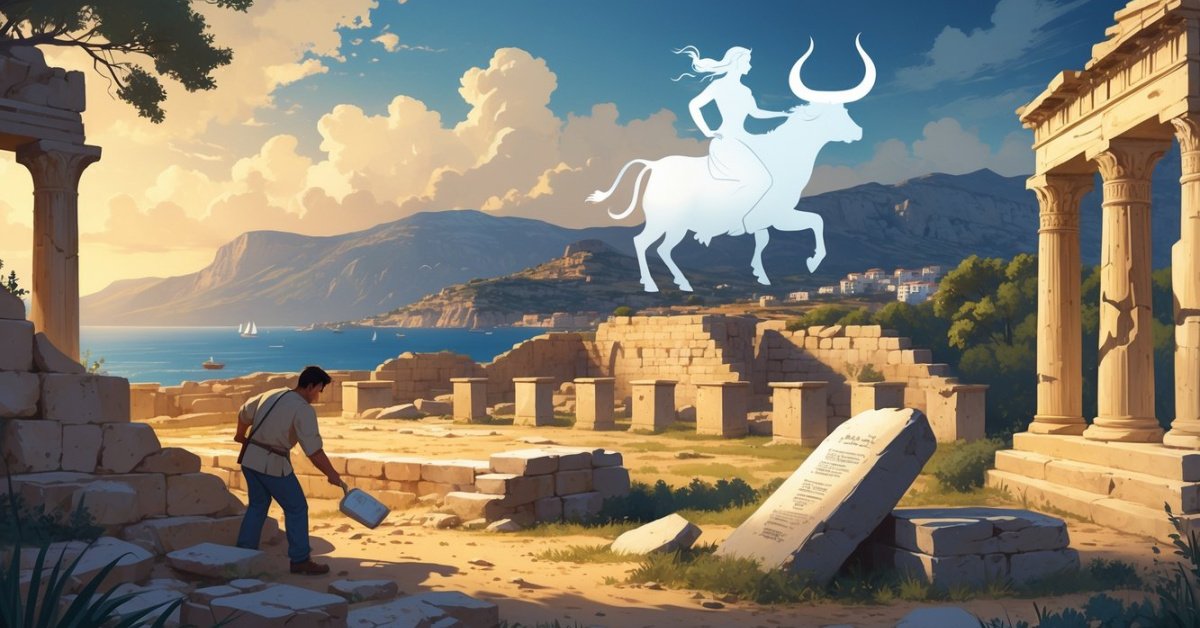Brunei is a small nation on the island of Borneo. Its past is filled with big questions and mysteries.
Some of the biggest historical mysteries in Brunei include the true origins of its early kingdoms, the real story behind its conversion to Islam, and what happened during its time as the powerful Brunei Sultanate. Many old records and legends suggest there is still a lot left to discover about Brunei Darussalam and its people.
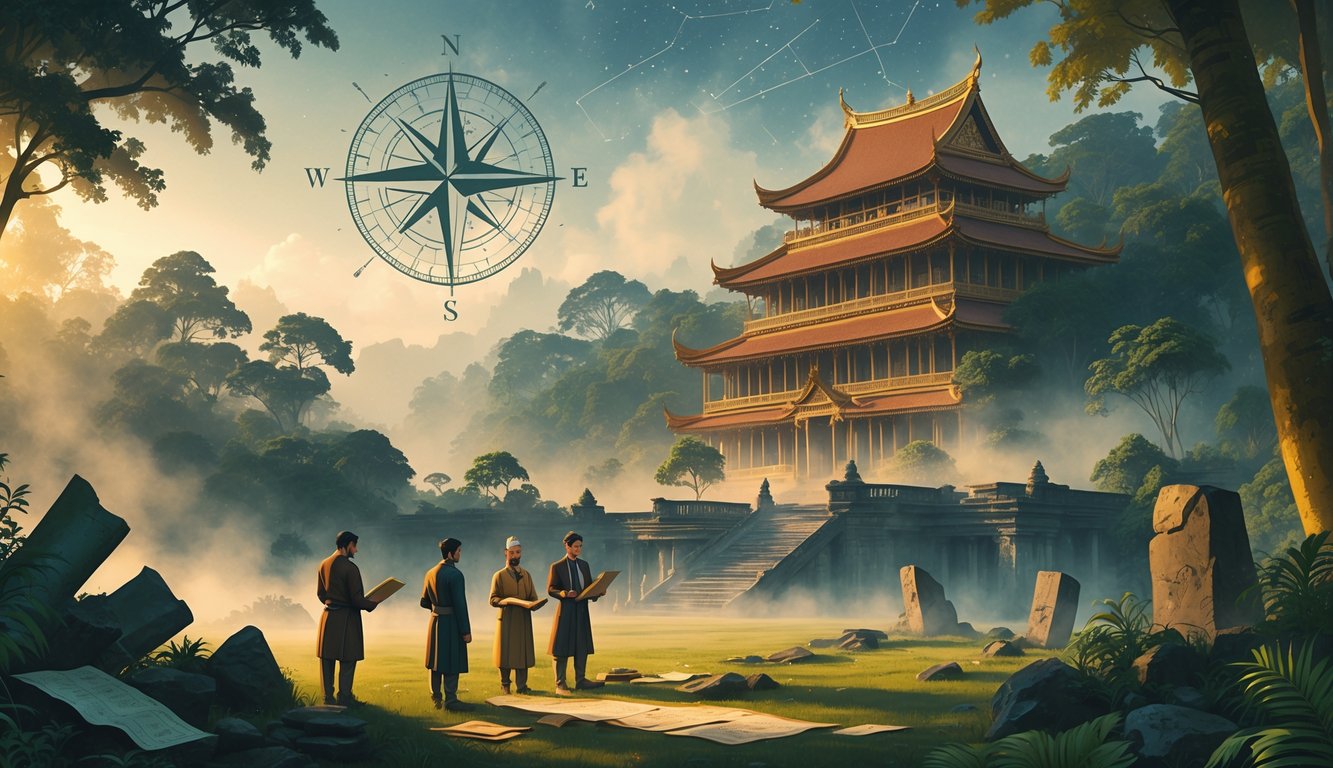
Explorers, historians, and locals have tried to piece together Brunei’s history using stories, artifacts, and old writings. The history of Brunei goes back to ancient times, with mentions in early Chinese texts and legends about lost cities and rulers.
Some tales talk of dragons, fairies, and hidden treasures. These mysteries spark the imagination and invite people to search for the truth behind the myths.
The unknown stories and unanswered questions of Brunei’s history keep people curious. Many want to learn more about this fascinating nation.
The Origins of Brunei
Brunei’s beginnings include ancient settlements, local legends, and the rise of important rulers. Archaeological evidence and early foreign records give clues, but many details about its first centuries remain uncertain.
The spread of Islam and the emergence of local Sultans helped shape the country’s identity.
Early History and Legendary Beginnings
The area now called Brunei has been inhabited for thousands of years. Chinese records from the 6th century mention a place called “P’o-li,” which historians believe may refer to early Brunei.
The people in this region traded with China and other Asian countries as early as 518 CE. Local legends describe a thriving community known as Puni.
According to these stories, Puni was ruled by local chiefs and saw the beginnings of organized society on the north coast of Borneo. Outside influences, including Hindu and Buddhist traditions, reached Brunei before it became an Islamic society.
Ancient Brunei grew because of trade. Its location along sea routes made it a center for exchanging goods like spices and camphor.
Despite its long history, much about these early times remains a mystery. Most details survive in legend and foreign sources.
Influence of Awang Alak Betatar and Muhammad Shah
Awang Alak Betatar stands out as a key figure in Brunei’s early history. According to popular stories, he led his followers from the interior to the coast and became the country’s first ruler.
Awang Alak Betatar changed the community’s future by converting to Islam and taking the name Muhammad Shah. Muhammad Shah became the first Sultan of Brunei, marking the start of a new era.
His decision to embrace the Islamic faith set a pattern for all later rulers. This move helped Brunei build stronger ties with other Muslim powers, especially in the 15th century.
The line of sultans that followed continued Muhammad Shah’s legacy. They turned Brunei into a respected Islamic kingdom in Southeast Asia.
For more details on these early events, visit this overview of the history of Brunei.
The Golden Age of the Sultanate
Brunei’s Golden Age marks a time when its rulers brought stability, wealth, and influence to the region. The empire grew larger and built strong relationships with neighbors.
The Rise Under Sultan Bolkiah
Sultan Bolkiah is known as one of the greatest rulers in Brunei’s history. He reigned from 1485 to 1524, a period often called Brunei’s Golden Age.
He led the sultanate to become a powerful maritime state. Brunei controlled vital trade routes along Borneo’s northern coast.
Many local communities and chiefs recognized Brunei’s strength. They began to cooperate or join the sultanate.
Sultan Bolkiah united people and followed Islamic values. He created a strong government and helped the region stay organized and peaceful.
The Bruneian Empire’s Expansion
During the 16th century, the Bruneian Empire spread its influence far beyond its own borders. At its height, the empire extended over much of Borneo, parts of the Philippines, and even into the Sulu Archipelago.
Maritime trade with places like China and the Middle East brought prosperity to Brunei. Merchants and traders brought goods such as spices, silk, and gold, using Brunei as a stopover.
Ships from as far as China visited Brunei’s ports in search of local products. The Nagarakretagama mentioned Brunei’s influence among major Asian powers.
Trade, diplomacy, and strong leadership helped make Brunei a key center of power in Southeast Asia. For more, read about the Bruneian Empire’s greatest extent.
Relations with Sultanate of Sulu, Majapahit, and China
Brunei’s government built diplomatic and trade ties with the Sultanate of Sulu, Majapahit, and China. Relations with Sulu included marriage alliances, partnerships, and sometimes conflicts over territory.
With the Majapahit Empire, Brunei first competed for influence in Borneo. Later, Majapahit recognized Brunei as an important regional power.
The famous Nagarakretagama poem described Brunei’s relationship with Majapahit and other kingdoms during this period. Brunei also developed deep connections with China.
Chinese traders often visited Brunei’s ports. Chinese records describe diplomatic missions and the sending of tribute.
These contacts helped Brunei maintain its wealth and importance in Asian trade networks.
The Mysterious Decline of Brunei
Brunei was once a powerful empire with influence across much of Borneo and parts of present-day Malaysia and the Philippines. Over time, a mix of internal conflict and outside pressures caused its power and territory to shrink.
Internal Strife and Rebellion
Brunei faced serious problems inside its own borders during its decline. The most damaging of these was the Brunei Civil War in the late 17th century.
This war weakened the country’s stability and leadership. Many local chiefs and groups rebelled against the central rule, causing chaos and further weakening the sultanate.
Internal fighting made it harder for Brunei to control its outlying regions or gather support when dealing with outside enemies. Piracy also grew in these troubled times, attacking ships and communities along the coast.
Civil wars and rebellious factions left Brunei less able to protect its people or defend its trade routes. Brunei’s ability to hold onto its vast lands was greatly reduced.
It became easier for foreign powers and rivals to take over key parts of its territory.
Colonial Influence and Territorial Losses
As Brunei struggled internally, foreign powers began to take a greater role in the region. The Portuguese started exploring the area in the 16th century but did not take over.
Problems grew quickly in the 19th century when European colonial expansion increased. The most significant loss came when Brunei lost large sections of land, such as Sarawak, to the British.
The White Rajahs of Sarawak took control, and Brunei signed a series of treaties, giving up even more territory. Piracy and coastal raids made the country look weak in the eyes of foreign powers.
In 1888, Brunei became a British protectorate. Brunei lost control over its foreign policy and defense.
By the time Brunei became independent again, it controlled only a small area compared to its former empire. Today, the story of how Brunei shrank from a vast empire to a small country remains one of Southeast Asia’s big historical mysteries.
Foreign Powers and the Shadow of Colonialism
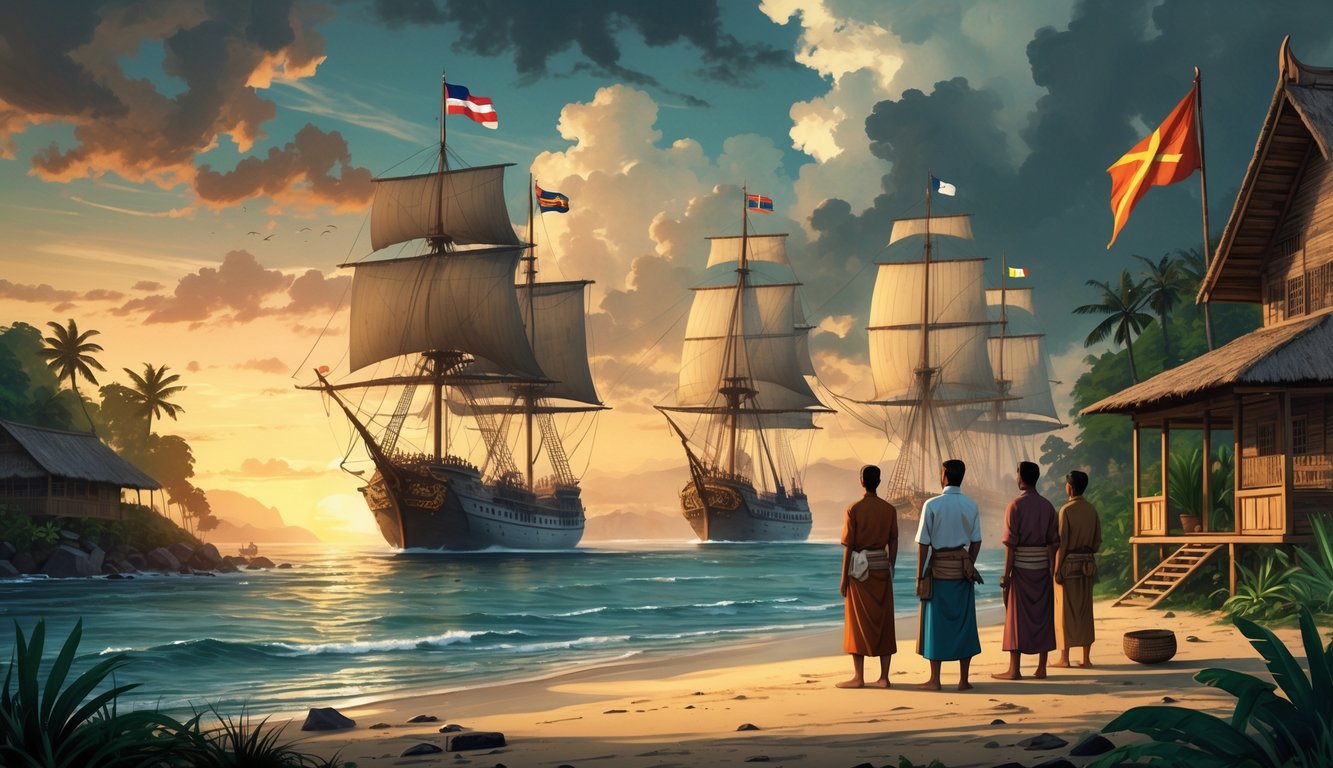
Foreign involvement shaped Brunei’s political story for over a century. British influence became especially strong, changing the power and borders of the country.
The Treaty of Friendship with Great Britain
In 1888, Brunei entered into the Treaty of Friendship with Great Britain. This deal came at a time when Brunei’s territory had already shrunk due to colonial expansion by neighboring powers.
The treaty made Brunei a British protected state. Great Britain agreed to defend Brunei from foreign threats, but Brunei lost control over its own foreign affairs.
As a result of the treaty, Brunei’s sultan stayed in power but had less freedom to act on the international stage. The shift from being an independent sultanate to a protected state marked the beginning of a long period of British involvement.
Role of the British Resident
By 1906, the British government strengthened its hold on Brunei. A new agreement placed a British Resident in the country.
The Resident’s role was very influential. While the sultan remained the formal head of state, the British Resident actually controlled most administrative decisions.
Laws, finances, and even aspects of daily government were under British supervision. The Resident system allowed the British to shape Brunei’s internal policies.
The arrangement limited the sultan’s decision-making powers. Brunei relied on British advisors for key choices.
This period also introduced new legal systems and reforms.
British Protectorate and the Path to Self-Government
Brunei continued under the British protectorate system through the 20th century. The country experienced highs and lows, including occupation during World War II.
After the war, British rule returned and continued for decades. Brunei did not gain full independence in the 1960s like many other states in the region.
Instead, it maintained close links with Great Britain much longer. Economic factors such as oil delayed independence, as shown in recent studies.
Step by step, Brunei gained more control over its own government. The presence of the British Resident and the long protectorate changed Brunei’s society and politics for generations.
Enigmatic Episodes During World War II
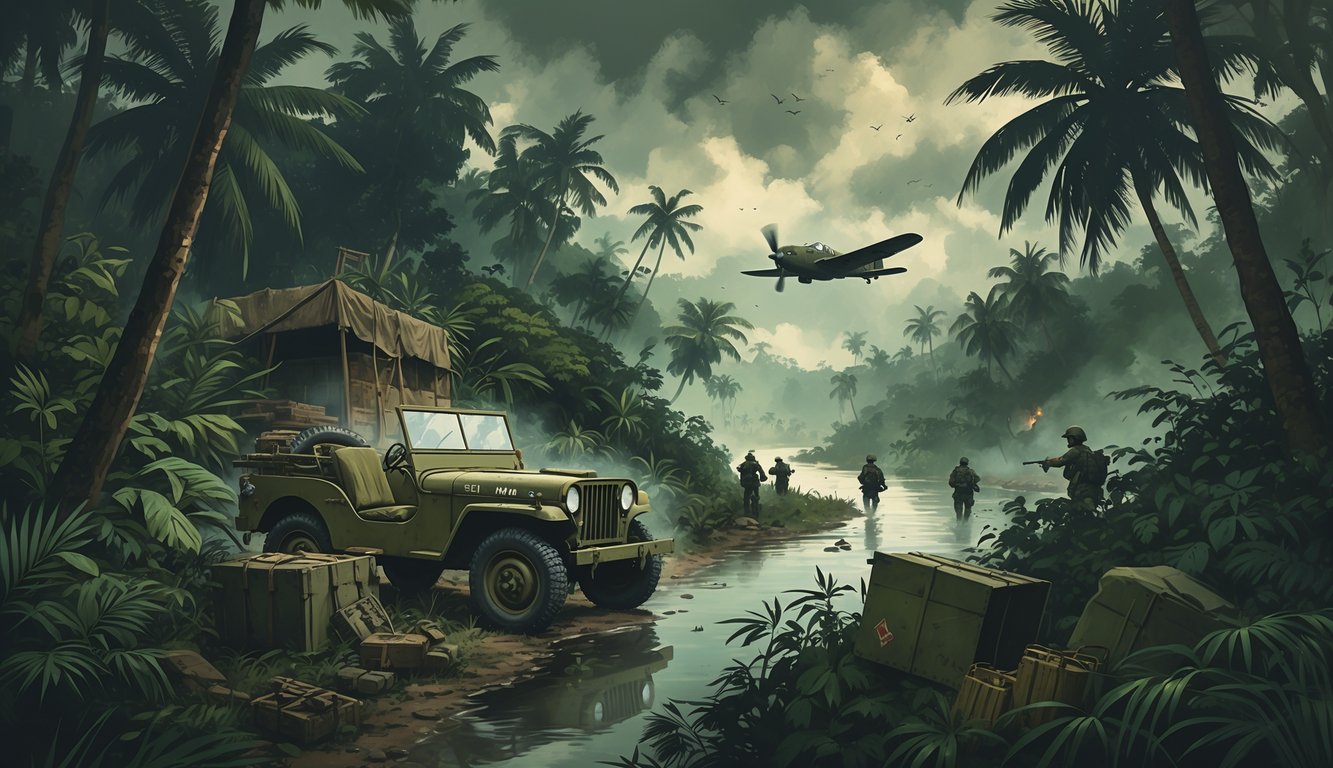
During World War II, Brunei experienced several unusual and difficult events. The country faced major changes under Japanese rule and left a history filled with questions about how people resisted and what memories remain today.
Japanese Occupation and Brunei Society
Japanese troops invaded Brunei in December 1941. Their arrival happened quickly and with little resistance.
Buildings were destroyed and roads were damaged. The economy collapsed, and food and other resources became scarce.
Many families had to find new ways to survive. The Japanese took over schools and replaced English with the Japanese language.
They tried to control all information. Residents had to follow strict rules and sometimes faced harsh punishments.
Fear and uncertainty spread through the communities. Traditional leaders lost power, and the Japanese put new officials in charge.
After the war, much of Brunei Town was left in ruins. People returning to the area described the destruction.
More information on these changes is found at Brunei during the Japanese Occupation in World War II.
Resistance and Legacy
Some Bruneians resisted the occupation in small ways. Secret groups met to share news and support each other.
A few people took big risks by helping Allied soldiers or hiding important information. Stories of this resistance later helped communities rebuild.
The legacy of World War II lives on in family stories, rebuilt neighborhoods, and landmarks. Oral histories show how people lived through the occupation and shaped Brunei’s identity.
For more about how Brunei remembers these times, visit this oral history of Brunei during WWII.
Independence and National Identity
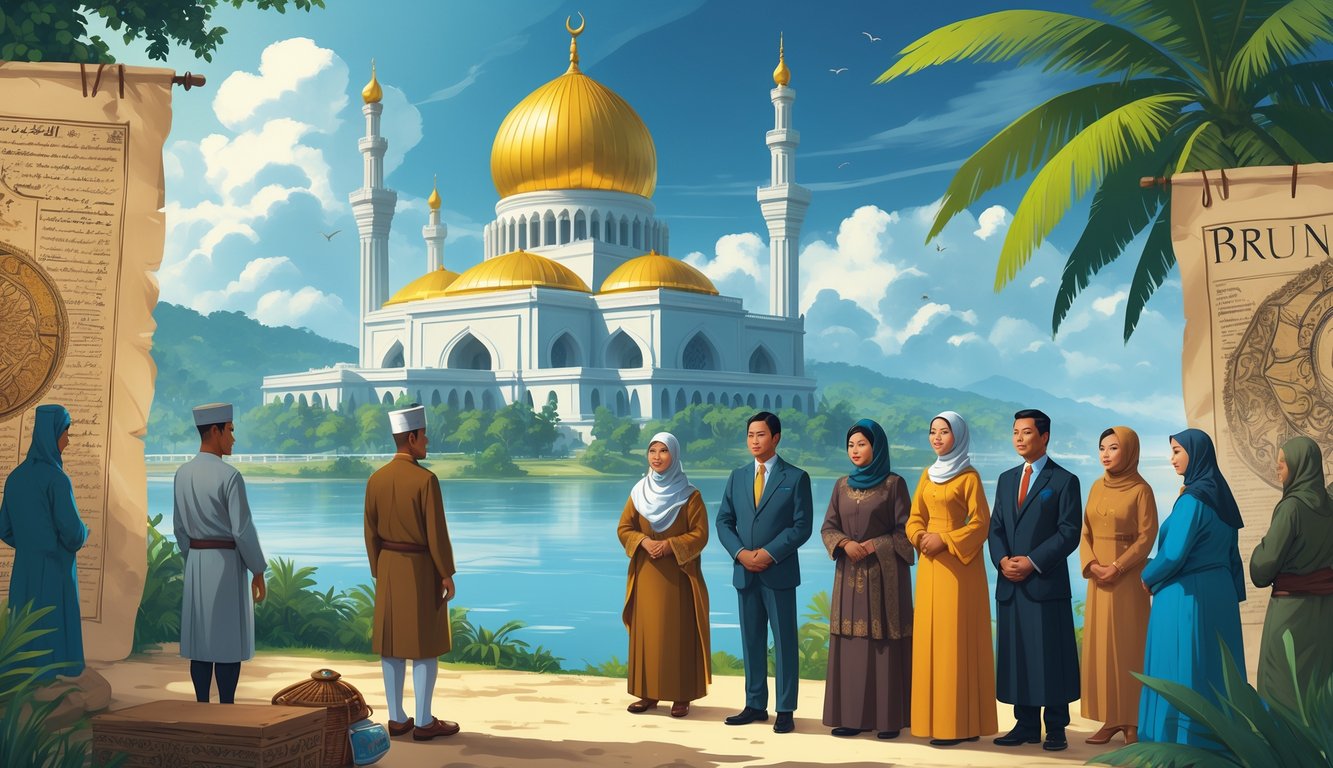
Brunei’s path to becoming a sovereign nation included important steps in law and government. These actions shaped Brunei’s national identity.
The Move Towards Full Independence
The quest for full independence in Brunei began decades before 1984. British influence in Brunei was strong after the 19th century, but hopes for self-government grew.
The British allowed Brunei to control its own internal affairs after World War II. However, Britain kept final control for some time.
Brunei officially proclaimed independence on January 1, 1984. Britain continued to handle some responsibilities until February 23, 1984, when Brunei became a fully sovereign nation.
Each year, National Day in Brunei celebrates this turning point. Sovereignty and independence remain a key part of Brunei’s identity.
Constitutional Developments
Brunei’s 1959 Constitution marked a major step toward independence. It started internal self-government and set out how the country would be run.
Key features of the 1959 Constitution:
- Provided for a written set of laws
- Introduced a Council of Ministers
- Protected certain rights for Bruneians
Britain still controlled defense and foreign policy until 1984. The Constitution helped shape the modern government.
When Brunei became fully independent, it used the 1959 Constitution as a base. Today, the Constitution still defines the country’s political system.
Royal Lineages and Unsolved Succession Mysteries
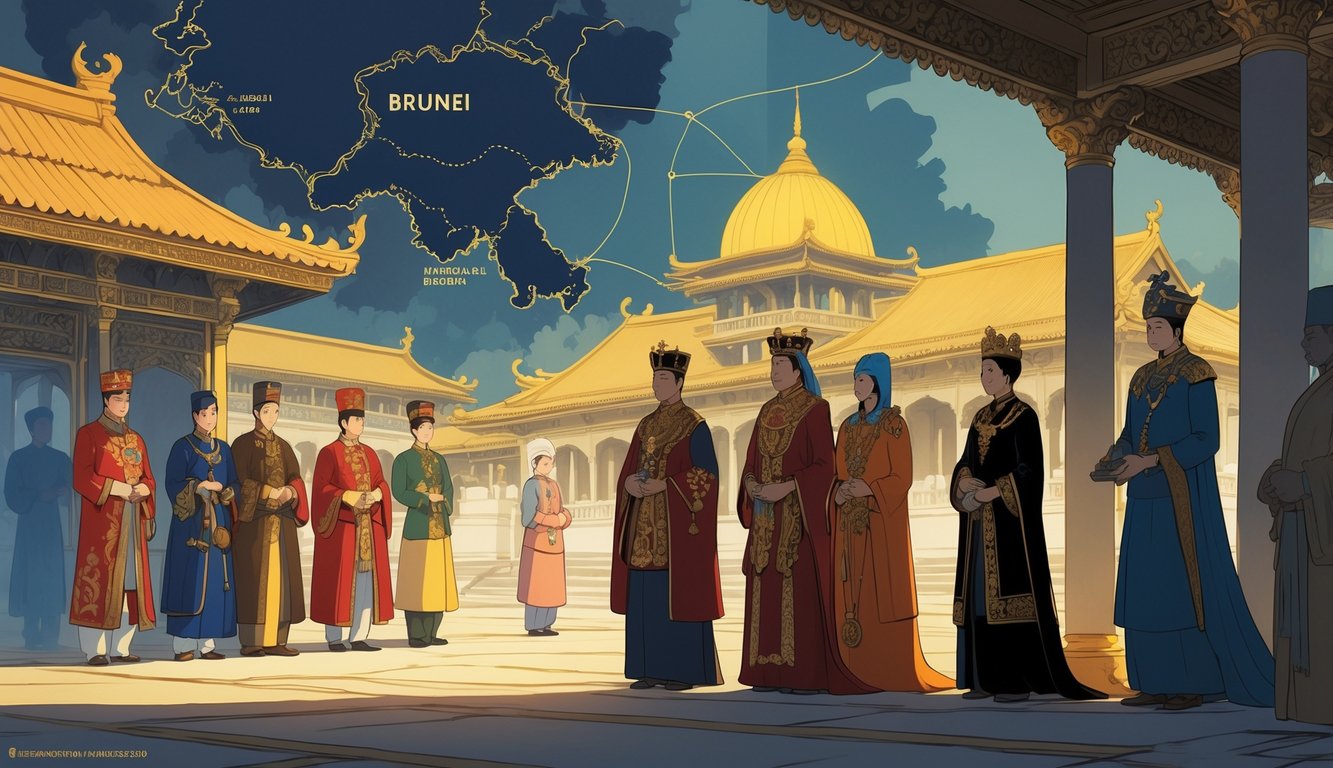
Brunei’s royal family has a long history shaped by mystery and tradition. Many details about early sultans remain unclear.
The Legacy of Sultan Muhammad Shah
Sultan Muhammad Shah is considered the first ruler of Brunei. Little is known about his early life or family origins.
Historians debate his exact background due to the lack of records. Some legends suggest he had Persian or local roots.
The line of succession after his rule is uncertain. Brunei’s early sultans often faced disputed claims and unclear successions.
It’s unclear how Sultan Ahmad and Sultan Sharif Ali rose to power, as their relationships to Sultan Muhammad Shah are not confirmed. These mysteries make it hard for researchers to trace a complete family tree.
Some historians still use oral history and old documents to guess the connections.
Modern Monarchs: Sultan Hassanal Bolkiah and Family
Sultan Haji Hassanal Bolkiah has ruled Brunei since 1967. His father, Sultan Omar Ali Saifuddien, abdicated the throne to make way for him.
The current royal family leads national life, but rumors and speculation about succession continue. The line of succession now follows a clearer pattern.
Crown Prince Al-Muhtadee Billah is first in line. Changes in family roles or politics could affect future leadership.
Past rulers like Sultan Hashim Jalilul Alam Aqamaddin added to Brunei’s royal legacy. Family ties and official titles sometimes remain mysterious, keeping the public interested in the royal succession.
Lost Cities and Archaeological Puzzles
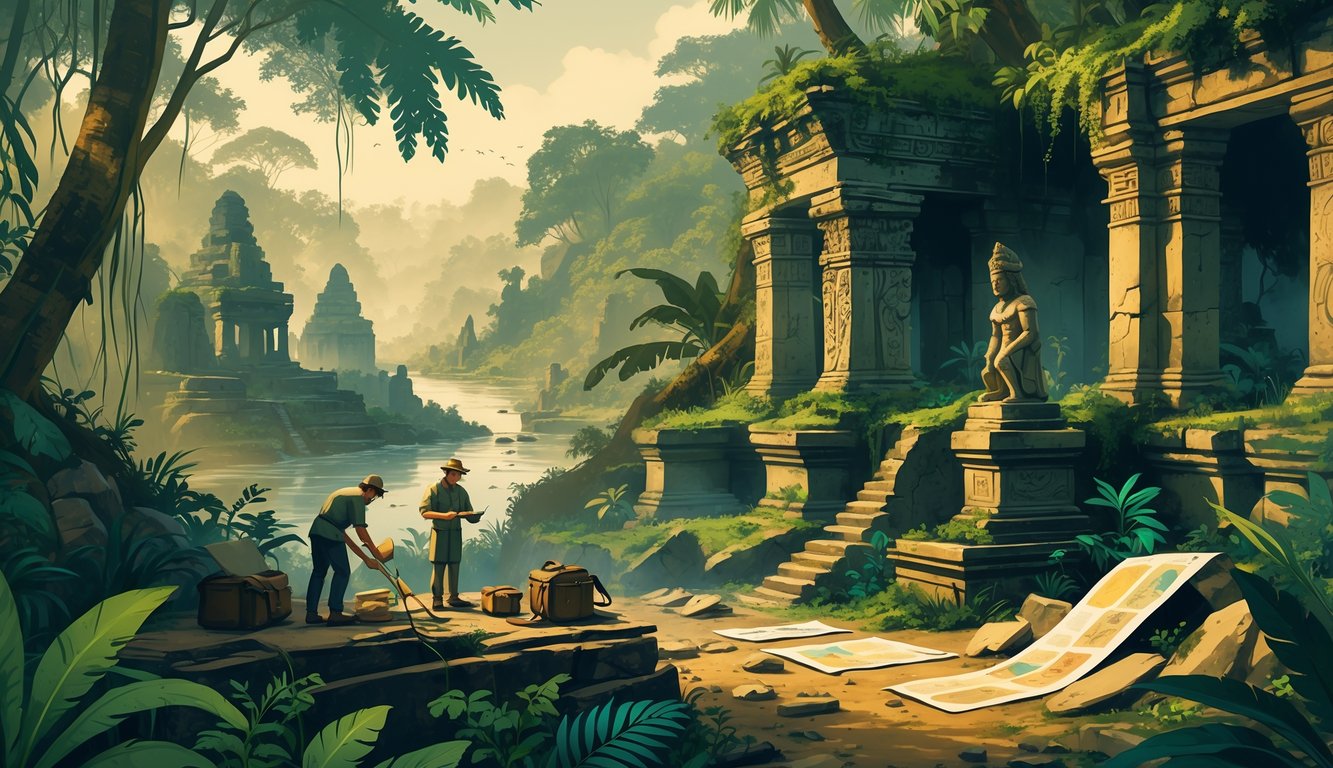
Brunei’s history is full of mysteries waiting to be uncovered. Ancient sites, hidden ruins, and lost settlements spark curiosity among historians and archaeologists.
Kota Batu and the Water Village
Kota Batu, meaning “Stone Fort,” is one of Brunei’s oldest historical sites. Archaeologists have found walls, pottery, and coins from ancient China, showing early trade links.
Kota Batu was once a main center of power during the Brunei Sultanate. Visitors today can see ruins and some reconstructed buildings.
The area also has Brunei’s archaeology museum, where artifacts from the site are on display. Nearby, Kampong Ayer—or the Water Village—remains a living link to Brunei’s past.
This floating village, made of wooden houses on stilts, has housed river communities for centuries. Locals still use boats for daily life, keeping close ties to their ancestors.
Key facts:
- Kota Batu marks the site of ancient Brunei’s royal palace
- Kampong Ayer is called the “Venice of the East”
- Artifacts show connections with other Asian civilizations
- The site gives insight into Brunei’s early political and social life
Learn more about Brunei’s hidden historical locations.
Archaeological Discoveries in Temburong and Belait
Temburong and Belait are districts in Brunei with dense rainforest and remote villages. Both areas have yielded surprising archaeological finds.
Researchers found stone tools, burial sites, and old jars in the forests and along rivers. Many items hint at ancient populations who lived off the land and water.
Sometimes, villagers discover these artifacts while farming or fishing. In Belait, pottery shards and old settlement patterns show how people adapted to the rivers.
Temburong’s discoveries are newer and less explored. Caves and hills there may hold more unmapped artifacts.
Highlights:
- Stone and pottery tools date back hundreds of years
- Burial jars show unique customs
- Some findings raise questions about early migration into Borneo
These puzzles help researchers piece together Brunei’s story. For more about lost cities, see this guide on lost cities and archaeological insights.
Legends, Myths, and Paranormal Tales
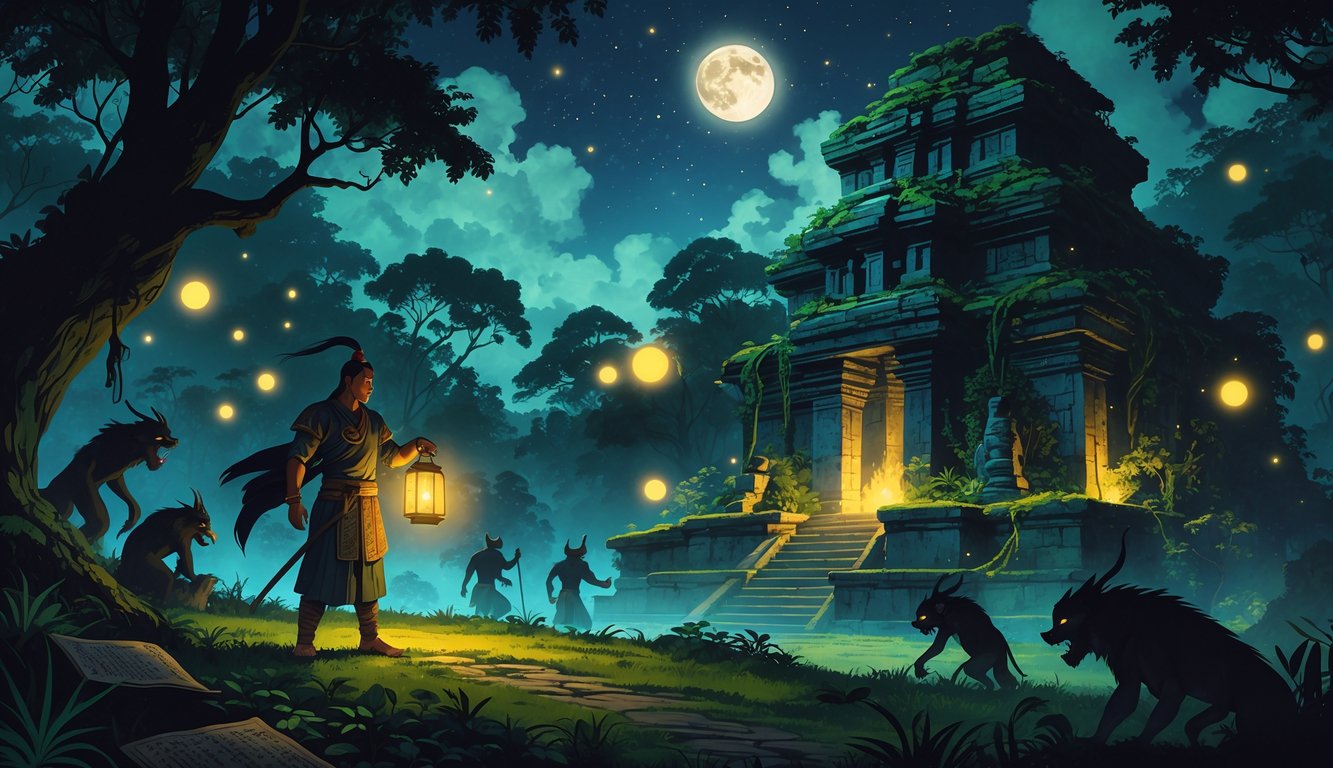
Brunei’s history and culture are filled with strange stories and unexplained events. Some tales talk about haunted forests and ghostly creatures.
Others focus on legendary monsters from the region. These stories remain a big part of local beliefs.
The Mystery of the Pontianak
The Pontianak is one of the most talked-about spirits in Brunei and the Malay Archipelago. People say she is the ghost of a woman who died during childbirth.
She is described as having long black hair, pale skin, and wearing a white dress. Many locals believe the Pontianak haunts dark forests and lonely roads at night.
Stories warn people to be careful, especially after sundown. According to legend, the Pontianak is known for her chilling cry and the smell of frangipani flowers.
People share tips on how to avoid her, such as staying indoors after dark or carrying sharp objects. The Pontianak remains a key part of Brunei’s folklore and continues to scare and fascinate both children and adults.
Sea Monsters, Spirits, and Urban Legends
Brunei’s rivers and coasts are full of stories about sea monsters and water spirits. Some tales are similar to the stories of the Loch Ness Monster.
Locals talk about huge, snake-like creatures in the water. Fishermen sometimes report seeing them early in the morning.
Other myths tell of spirits, or “hantu,” that live in old buildings or large trees. These spirits guard certain places or punish people who disrespect nature.
Urban legends in Brunei blend traditional beliefs with newer ghost stories. People talk about haunted schools, mysterious lights, and creatures that roam at night.
A simple list of the most well-known creatures and legends in Brunei:
- Pontianak (female ghost)
- Sea monsters in rivers and estuaries
- Water spirits (“hantu air”)
- Haunted urban locations
Local people still share these stories. They remain a big part of daily life and cultural identity.
Brunei’s Hidden Economic Mysteries
Brunei is a small but wealthy country in Southeast Asia. Its economy depends on natural gas and petroleum, but there are still mysteries surrounding its wealth and development.
Natural Gas and Petroleum Wealth
Brunei relies heavily on natural gas and petroleum for most of its income. The main oil field, Seria, started producing in the 1920s.
Offshore fields were developed later. Oil and gas exports provide about 90% of government income, funding social programs and daily needs.
It remains unclear how long Brunei’s natural gas and oil reserves will last. Many analysts debate the true size of the reserves and worry about future shortages.
The government keeps information about production levels and reserves private. Outsiders find it difficult to judge Brunei’s financial security.
The question remains whether Brunei can maintain its living standards once these resources run out. This uncertainty adds to the country’s economic mystery.
Economic Growth and Transformation
Brunei’s leaders have tried to move the country beyond oil and gas. They support new businesses, tourism, and halal manufacturing.
Success in diversifying the economy has been slow. Many Bruneians still rely on government jobs or benefits.
There are few private sector opportunities, and foreign companies face many rules. These factors make it hard for Brunei to build a strong economy outside of oil and gas.
Reports show the country also faces rising household debt and economic pressure. Brunei’s government knows about these problems, but real change is happening slowly.
This slow transformation remains an economic mystery for many observers.
The Enigma of the Bruneian GDP
Brunei often ranks among the world’s highest in GDP per capita. Most of this wealth comes from petroleum and natural gas exports.
A high GDP can mislead when an economy depends on a single industry. Brunei’s income relies mostly on gas and oil.
Few other large industries operate in the country. The government spends heavily to support public services.
Some analysts question whether GDP truly reflects life in Brunei. Household debt and slow private sector growth mean not everyone enjoys equal benefits.
Underlying challenges make Brunei’s GDP an enigma. Both experts and locals still puzzle over its real impact.
Enduring Legacies and Unanswered Questions
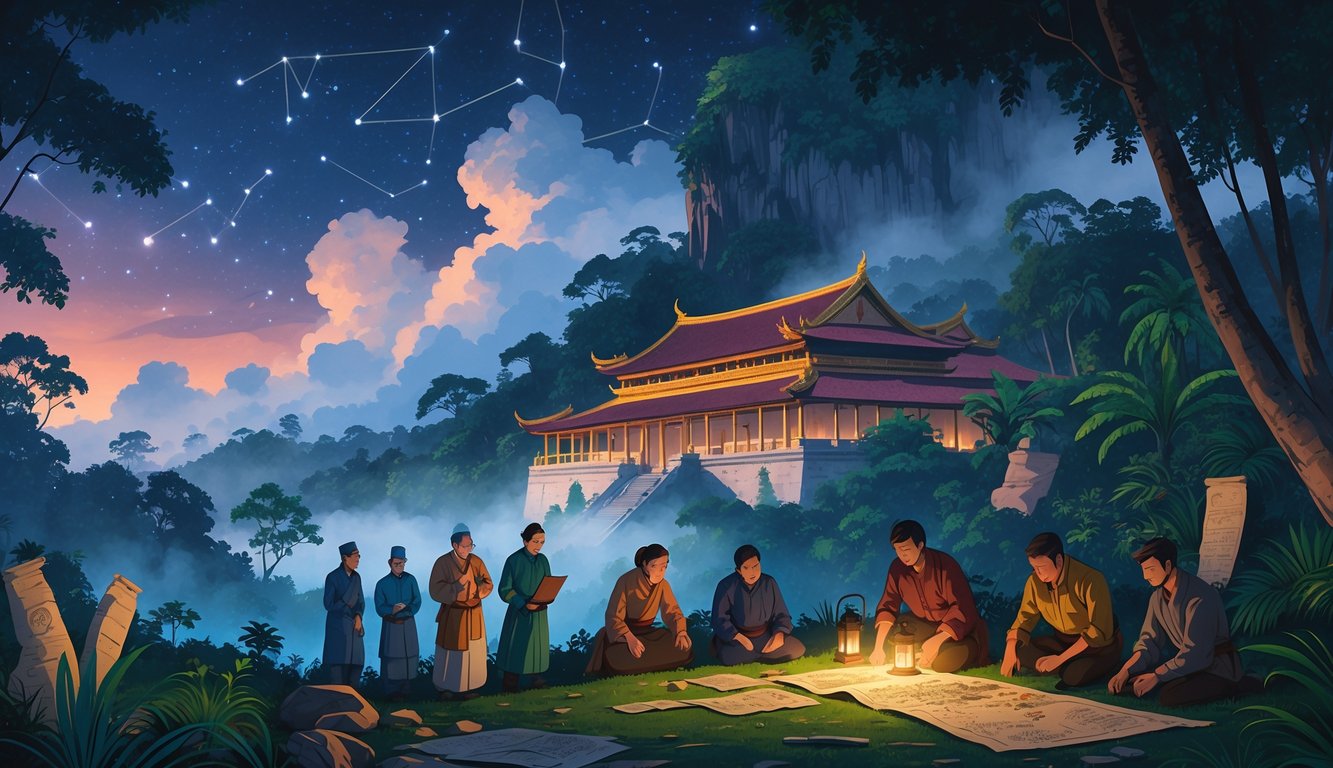
Brunei’s history contains mysteries linked to its Islamic heritage, political choices, and international disputes. Unique sites, secretive politics, and global claims raise questions for people inside and outside the country.
Heritage Sites and Islamic Faith
Brunei is known for its strong Islamic heritage and impressive landmarks, especially in Bandar Seri Begawan. The Sultan Omar Ali Saifuddien Mosque symbolizes national pride and faith.
Many details about the mosque’s design and construction remain unknown. The practice of Islamic law, especially after Sharia Law was introduced, has led to debates about how religion and tradition mix in daily life.
Locals and researchers sometimes struggle to find information about ancient manuscripts or early mosques that have vanished from public records. Tourism in Brunei often centers on sacred sites, but some areas with old Islamic relics stay closed to visitors.
Historians and elders debate whether this secrecy protects the relics or adds to the mystery.
Modern Political Mysteries
Brunei’s political system stands out as unique. The country has no active political parties, and its Legislative Council meets privately.
Decisions from these meetings shape the nation, but officials rarely share details with the public. This secrecy raises questions about how leaders form policies and who influences their choices.
After the Brunei Times closed, people lost access to independent news. Many wonder why the newspaper shut down and whether outside pressure or internal conflicts caused it.
People trying to understand political change in Brunei must piece together facts from limited sources. Stories about leaders, elections, or hidden political disagreements often circulate informally but remain unconfirmed.
Foreign Relations and the South China Sea
Brunei’s foreign relations, especially its ties with neighbors in Southeast Asia, have shaped much of its recent history. The country’s claim to parts of the South China Sea has led to ongoing disputes with powerful neighbors like China and Malaysia.
Officials choose their words carefully. Most negotiations happen in private.
Brunei rarely shares details about talks or policy changes. This secrecy makes it hard to track the country’s current stance on its claims.
Diplomatic visits to Bandar Seri Begawan highlight these issues. However, observers often leave with more questions than answers.



